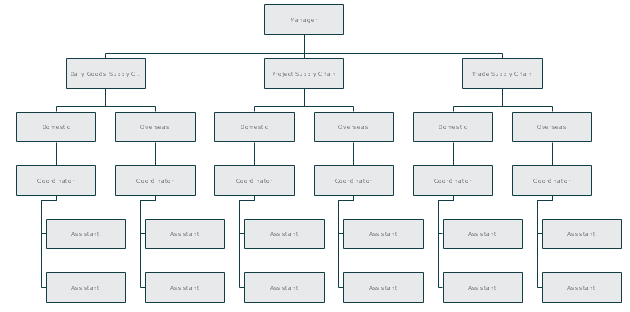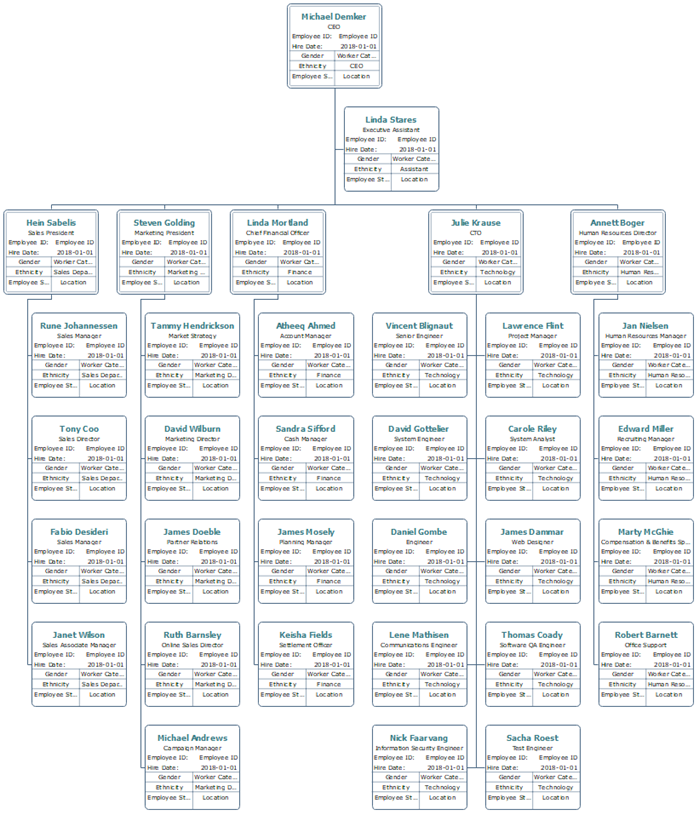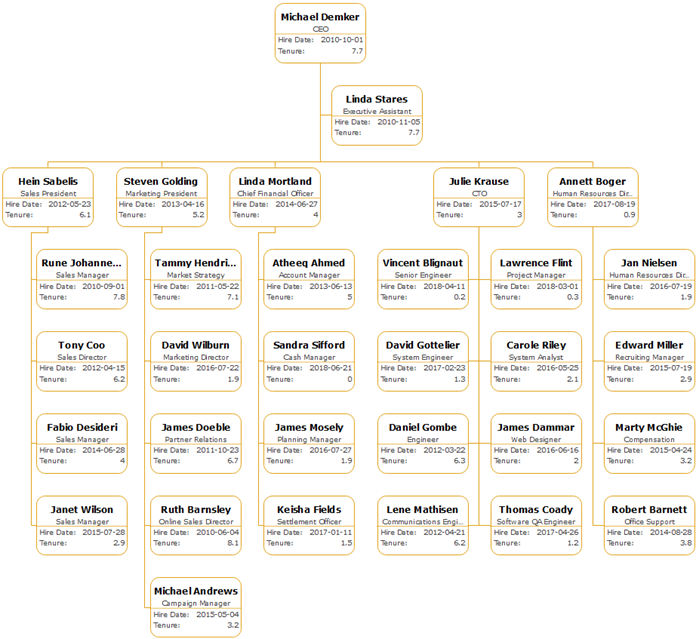Workforce planning is crucial to organizational human resources management. How much do you know about the concept? Have you ever undertaken any steps to do your own workforce planning? Let’s find out today with an organizational chart example.
What is Workforce Planning?
Generally, it is a continual process used to align the requirements of the organization in order to meet organizational objectives. Workforce planning usually based on development strategies, systematic identification and detailed analysis of an organization in terms of its size and skills of its workforce. Moreover, the cycle of workforce planning usually in line with the business planning cycle within an organization. Here is a workforce planning organizational chart example:

If you are working for the human resources department of a large-scale enterprise, then you may need to sort and check countless contact information details of your team. Are there any solutions to this? Today, we gonna show you how to create contact information organizational chart to improve your work productivity.
Contact Information Organizational Chart – What Is It?
A contact information organizational chart covers an individual employee’s personal information by which the human resources manager can use to reach the individual. For example, the department name, the job title, the work phone, the work email and so on. Here is an example of the contact information organizational chart (click on it to enlarge):
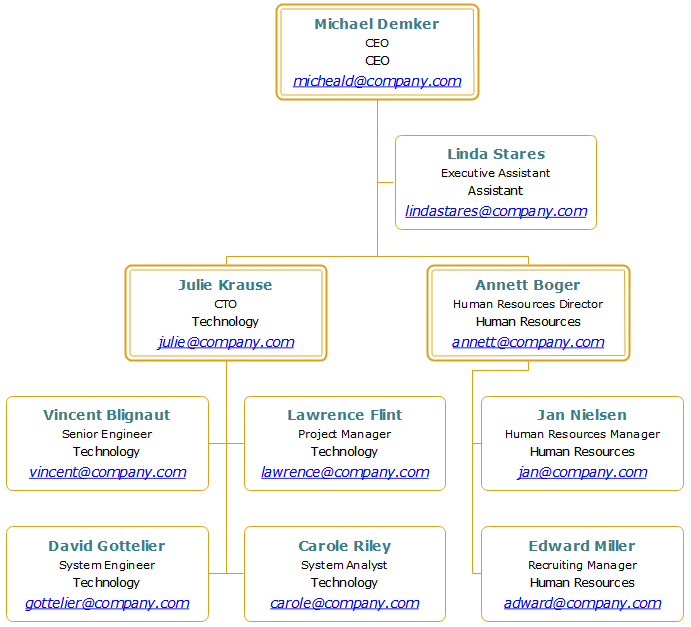
The span of control is commonly used in business management, particularly human resources management. It refers to the number of subordinates a supervisor has. Check out this article for more details based on a span of control organizational chart.
What is Span of Control?
It is the number of subordinates that a manager or supervisor can directly control according to the different types of work. The addition of new hierarchical layers makes the organizational structure steeper. Normally, a large Span of Control leads to a flatter organizational structure. A small span of control creates a steeper organizational structure.
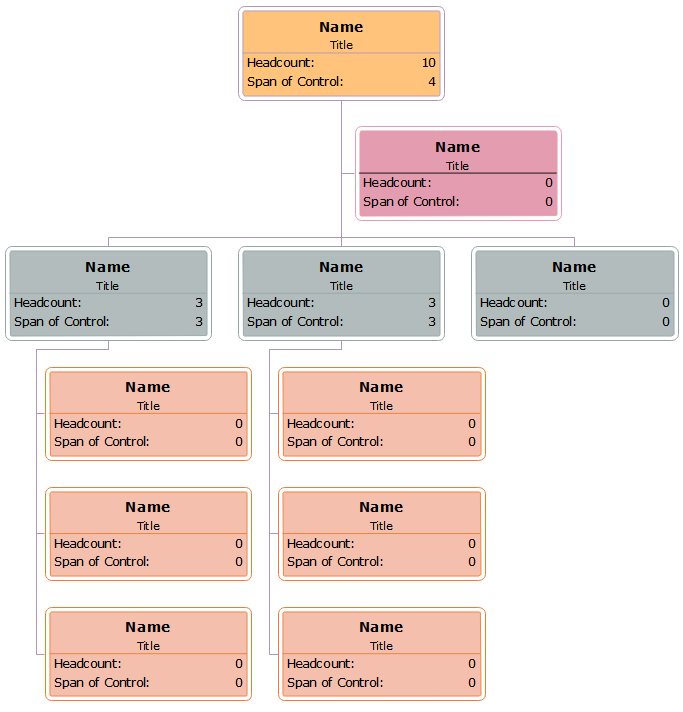
Recruitment is usually the first step in joining an organization. Do you know what are the key steps to undertake a recruitment process? Why we need internal recruitment? Are there any easy ways for me to create recruitment organizational chart? In today’s article, we will find out all these questions!
What is Recruitment in Human Resources?
Recruitment is a human resource management process that involves attracting, shortlisting, analyzing, screening, selecting and appointing suitable candidates for both permanent and temporary jobs. Besides human resources managers, commercial recruitment agencies may also be involved in carrying out a recruitment process. Here is a template of recruitment organizational chart:
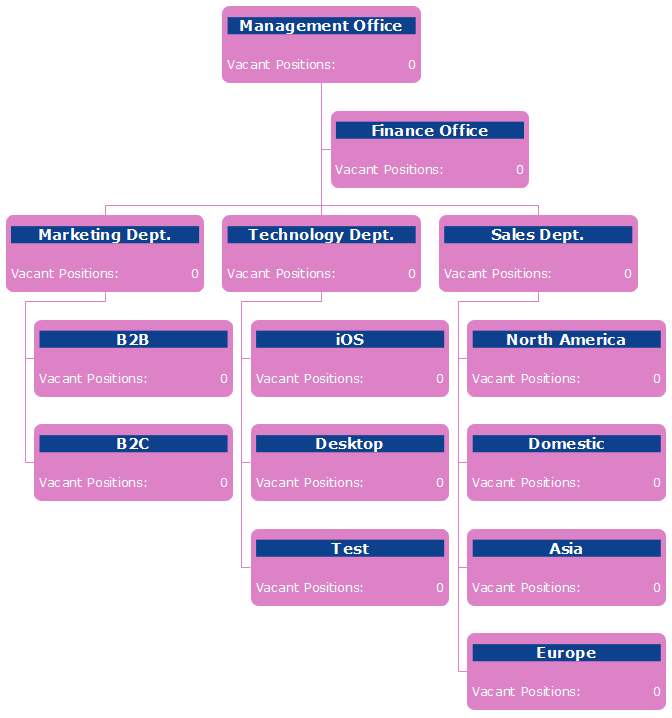
The human resources management field not only include training, recruitment, performance and pay but also covers important legal issues. In today’s article, we will talk about the Fair Labor Standards Act (FLSA) organizational chart with an example.
What is the Fair Labor Standards Act?
It is a United States federal law published by Congress in 1938 and it covers five parts: minimum wage, overtime pay eligibility, recordkeeping, and child labor. The Fair Labor Standards Act influence both full-time and part-time workers in profit and non-profit organizations. According to the Act, all overtime-eligible employees MUST be paid with overtime compensation for all hours worked more than 40 in a single week. Here is an example of the Fair Labor Standards Act org chart:
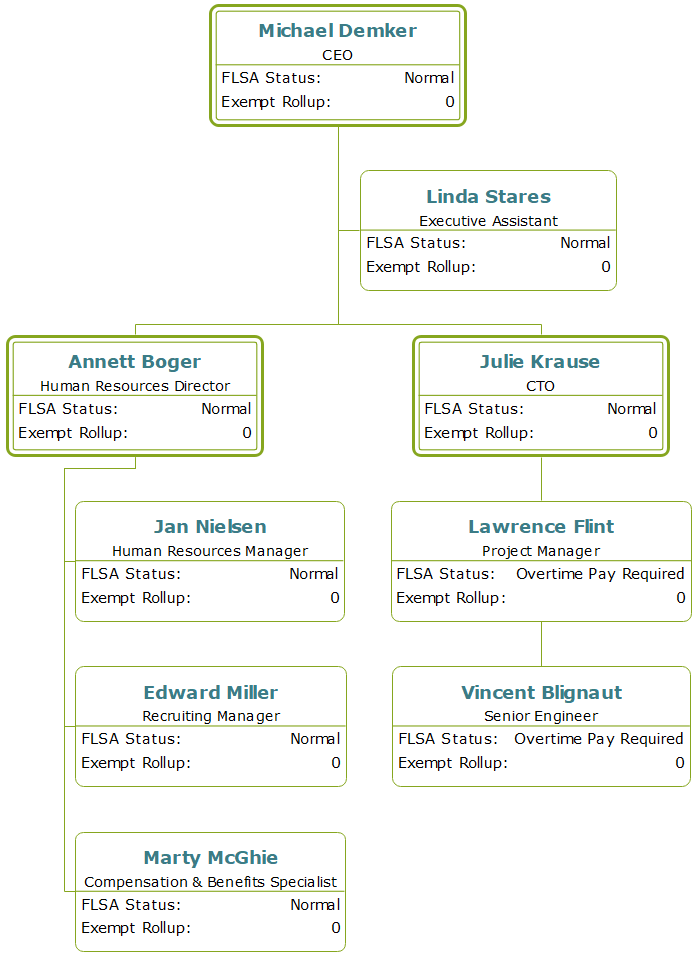
If you are new to the HR department of your organization, you will definitely need to handle lots of employees’ contracts. Now, let’s find out the key advantages of contract management for human resources and how to manage your employees’ contracts.
What is HR Contract Management?
Generally, human resources contract management is the process of operational contract management within an organization. It is similar to the concept of sales or procurement contracts, and it also shows the business relationship between employees and organizations with certain terms and conditions. Managers should consider human resources contract management based on a critical and strategic point of view. Here is an example of the contract management organizational chart. You can see the contract start and end dates on it.
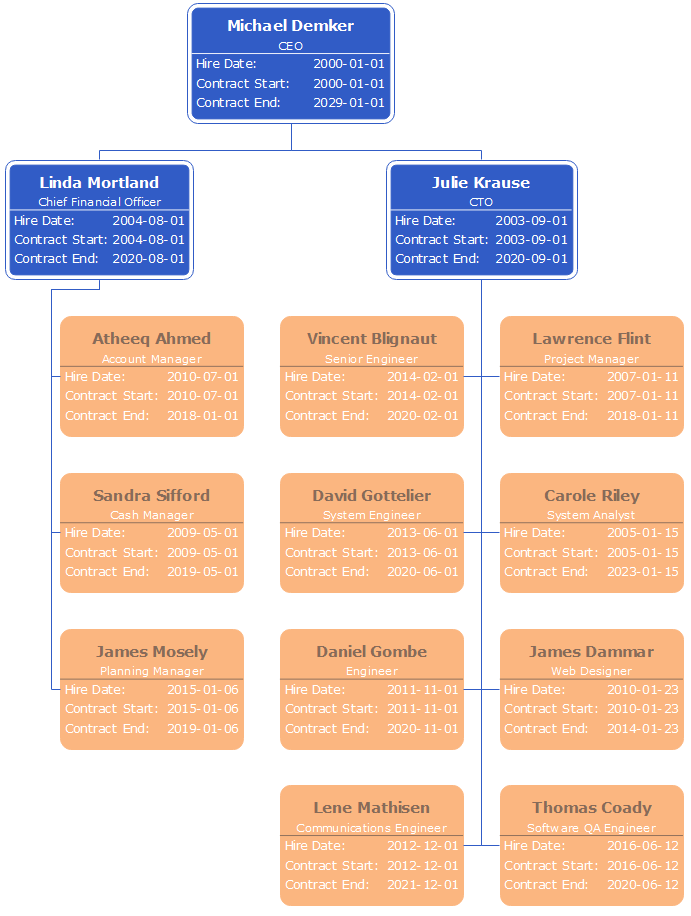
Employee performance evaluation is crucial to an organization. Learn more about such an evaluation process by referring to this easy guide. Let’s start now.
What is Employee Performance Evaluation?
Normally, the employee performance evaluation is the process of setting specific performance expectations for each employee as well as offering informal and formal feedback about employee performance related to those pre-set goals.
What are the Key Uses of Employee Performance Evaluation?
So far, many worldwide organizations from startups to international enterprise have integrated employee performance evaluation systems to support organizational training and career development, pay, promotions, and reductions-in-force, etc.
The title organizational chart template is probably the most common presentation of an organizational chart because you can only find employee titles in your team. Today, we will check out together some of the popular title organizational charts with templates. Feel free to click on any of them to enlarge. Let’s start now.
Logistics Company Title Organizational Chart Template
This template shows the general organizational structure of a logistics company. You can clearly see the three key supply chains with both domestic and overseas channels. Also, each of the coordinators has two assistants to help the project.
As a human resources manager, you have to face lots of employee personal data every day. The traditional organizational chart with only employee names and titles seem to be way too simple for a large-scale organization. So what should you do now? Just try the HR details organizational chart for your team right now!
HR Details Organizational Chart – What Is It?
A HR details organizational chart includes all you need for an employee: names, titles, gender, departments, locations, hire dates, employee ID and more. Below is an example of the HR details organizational chart (click on it to enlarge):
If you are a human resources manager, what would you do to deal with lots of employee data (personal details and hire date, etc.)? Today, we gonna show you how to use the hire date organizational chart to better manage your team.
Hire Date Organizational Chart – What Is It?
Compared to the traditional type, hire date organizational chart include both the name, the role and the hire date of an individual employee. Therefore, human resources managers can easily record and track the tenure of the company’s personnel. Here is an example of the hire date organizational chart (click on it to enlarge):


